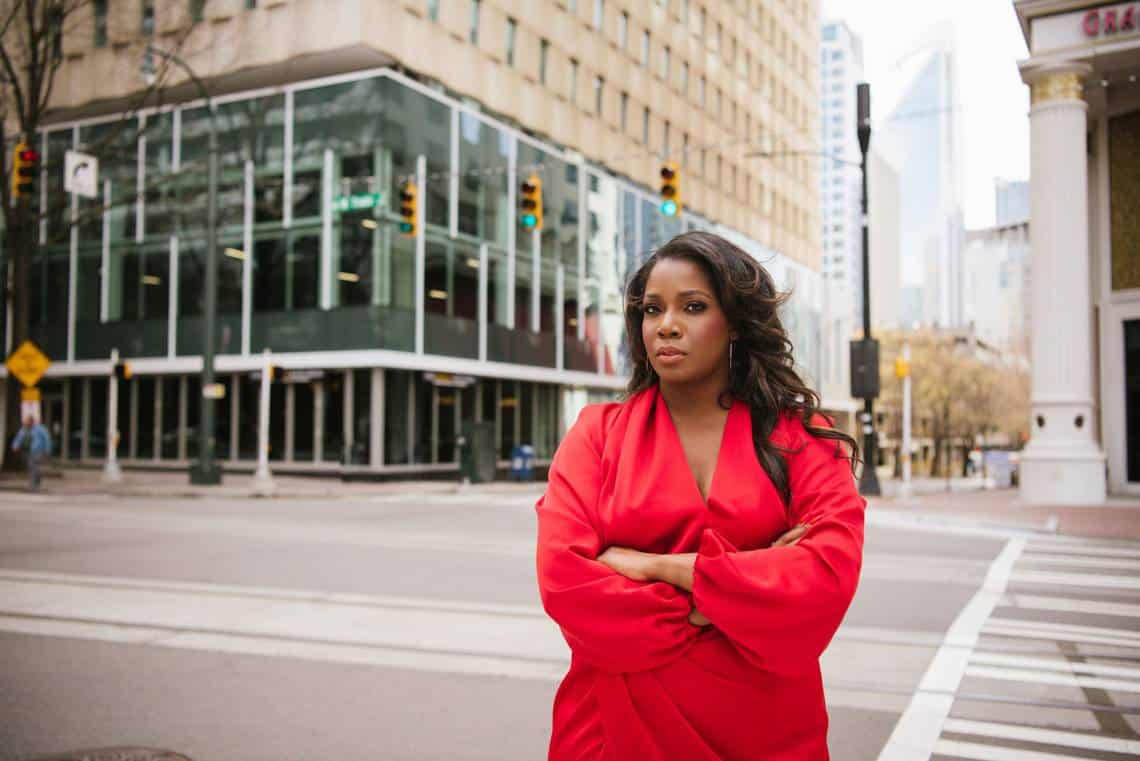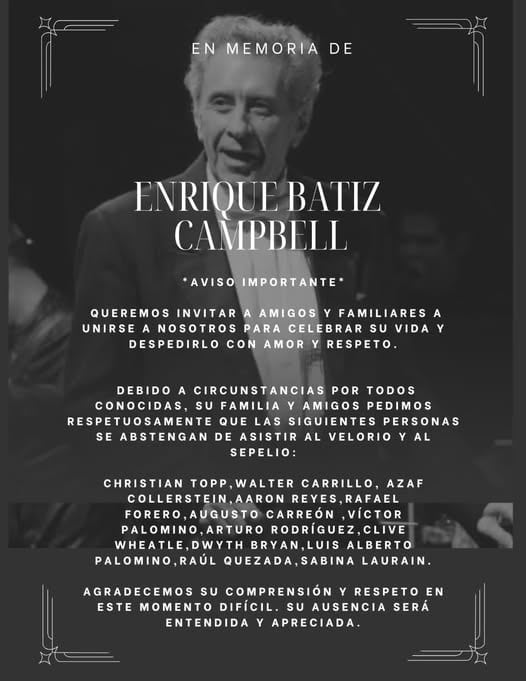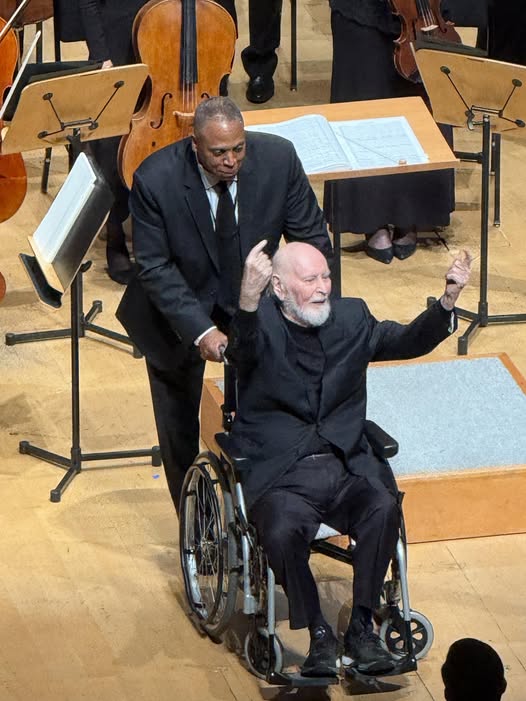Who smeared Dutilleux as a Nazi collaborator when he was, in fact, a Résistant?
mainThe files have been brought out of the vaults. Two days ago, the Mayor of the 4th arrondissement of Paris refused to allow a plaque to be affixed on Henri Dutilleux’s apartment, claiming he had been a Nazi collaborator. Now, the curator of the national Résistance museum has published the facts, proving that Dutilleux and his wife Geneviève Joy were active in the underground fight against the German occupation and closely associated with some of its heroes.
We publish the curator’s letter below. It now seems likely that Dutilleux will get his plaque, though the smear will take some time to fade from his reputation, the more so since it has been picked up by German media.
The question remains as to how the foolish mayor of the 4th arrondissement and a Paris city councillor were fed false information about an innocent, and indeed honourable, member of the musical community.
The smear harks back to the 1960s and 1970s when Dutilleux and traditional composers were locked in dirty war with the ‘progressive’ forces of Pierre Boulez and the Left. Both sides behaved badly. Several composers lost their careers for falling on the wrong side. It would be fitting, in the month of Boulez’s 90th birthday, if peace was made and tribute was paid at last to Henri Dutilleux, among other collateral victims of the modernist crusade.

POUR LA MEMOIRE D’HENRI DUTILLEUX
Henri Dutilleux, le compositeur résistant, était membre du comité d’honneur du musée de la Résistance nationale (MRN) aux côtés de l’écrivain résistant Jean Cassou, du cinéaste résistant Jean-Paul Lechanois, du philosophe résistant Vladimir Jankelevitch, de l’artiste résistante Madeleine Milhaud, du poète résistant Pierre Seghers, des peintres résistants Boris Taslitzky et Édouard Pignon, ainsi que des résistant(e)s Lucie et Raymond Aubrac, Renée Bédarida, Jacques Debu-Bridel, Vincent Badie, Georges Montaron, Pierre Sudreau, Christian Pineau, Louis Terrenoire, Charles Lederman, Joel le Tac, Hélène Langevin, Henri-René Ribière, Marie-Claude Vaillant-Couturier, Jacques Piette, Gaston Cusin, Pierre Meunier, etc.
Une place justifiée qui honore le musée.
Avec son épouse la pianiste Geneviève Joy, résistante elle aussi, le 24 juin 2004, il présidait en l’église Saint-Eustache à Paris, le concert « Musiques résistantes, Musiques libérées » coproduit par le Musée de la Résistance nationale, le Musée du général Leclerc de Hautecloque et de la libération de Paris – Musée Jean Moulin et France musiques (Réalisation Karine Le Bail) pour le 60e anniversaire de la libération de Paris.
Le maire empêché, Christophe Girard, alors adjoint en charge de la culture et Odette Christienne en charge du monde combattant et de la mémoire, étaient à leurs côtés pour ce concert d’anthologie où furent jouées des œuvres de Jehan Alain, d’Elsa Barraine, de Francis Poulenc, de Georges Auric, de Manuel Rosenthal, de Darius Milhaud, de Louis Durey, de Claude Delvincourt, d’Henri Dutilleux mais aussi des œuvres du compositeur italien Mario Castelnuovo-Tedesco et du compositeur allemand Arnold Schönberg toutes écrites entre 1940 et 1945. L’élaboration de ce programme lui devait beaucoup : sa manière à lui de prolonger l’hommage à ses compagnons qu’avec Madeleine Milhaud ils avaient apporté le 9 mars 2001 au conservatoire de Champigny lors d’une d’une soirée d’hommage à Jean Cassou (animation : Marc Dumont, producteur à France Musiques).
La présence d’Henri Dutilleux au concert et au comité d’honneur du musée furent ses seules affirmations publiques de son engagement en résistance avec pour seul désir de témoigner de l’histoire méconnue du petit groupe de compositeurs et de musiciens qui, à l’exemple de tant d’autres patriotes engagés sur d’autres fronts résistants, avaient, par leur Art, continué la France, par leurs actes, contribué à sa libération et à sa renaissance.
L’histoire en résistance d’Henri Dutilleux et de ses compagnons est simple et courageuse.
Faisant suite à l’appel lancé, en mai 1941, par le Parti communiste français pour la constitution d’un « Front national de lutte pour la liberté et l’indépendance de la France » Elsa Barraine et Roger Desormière constituent le noyau fondateur d’un comité de « Front national des musiciens » en liaison avec Pierre Villon (dirigeant du Front national de lutte pour la liberté et indépendance de la France) et Louis Durey replié, alors, en zone non occupée.
En octobre 1941, un manifeste pour la profession est rédigé par Claude Delvincourt. Il paraît dans le numéro clandestin de L’Université libre aux côtés de ceux en direction des universitaires, des intellectuels de zone non-occupée, des médecins, des écrivains et des plasticiens. Autour de ce manifeste se regroupent entre l’automne 1941 et le printemps 1942 : Henri Dutilleux mais aussi Roland Manuel, Georges Auric, Francis Poulenc, Charles Munch, Manuel Rosenthal, Henry Barraud, Irène Joachim, Monique Haas, Marcel Mihalovici et Geneviève Joy. Leur devise « L’Art n’a pas de patrie, certainement. Mais les artistes en ont une ».
Autour du journal clandestin Musiciens d’Aujourd’hui dont le titre est dessiné par le plasticien André Fougeron, le groupe développe une résistance originale, spécifique sur plusieurs fronts. Musiciens d’Aujourd’hui tiré à 1 600 exemplaires, Le musicien patriote et une dizaine de tracts dénoncent l’aryanisation et la vassalisation de la musique réalisées par l’occupant et l’État français. Dans le même mouvement sont affirmées les positions éthiques à prendre par la profession et la défense du patrimoine musical français et celle des œuvres des compositeurs étrangers, notamment allemands, mis à l’index.
S’il doit, comme ses compagnons, consacrer une large part de son temps à des travaux alimentaires (notamment à des commandes de l’Etat français dont Forces sur le stade), tous font preuve d’une grande activité créatrice et de recherche. De nombreuses œuvres sont créées, notamment sur un répertoire de poésie clandestine, des travaux de musicologie sont entrepris. Ces créations ou des œuvres de contrebande sont jouées dans des concerts autorisés ou clandestins. Henri Dutilleux et ses camarades organisent et développent la solidarité envers leurs collègues juifs exclus (chefs de chant, danseurs, musiciens, électriciens, etc.) ou en exil (en premier lieu Madeleine et Darius Milhaud) : collectes ; planques des biens et des personnes ; fausses déclarations pour la perception des droits d’auteur (ceux de Jean Wiener par exemple), etc. Déjà en 1941, Henri Dutilleux s’était distingué en renvoyant, vierge avec pour seule inscription manuscrite « la honte ! » , à Alfred Cortot président du comité d’organisation professionnelle de la musique, le questionnaire officiel de l’Etat français pour « l’aryanisation » du monde musical.
Avec d’autres résistants, particulièrement Marie-Louise Böllmann-Gigout, militante de Défense de la France, s’organise la résistance au STO, l’aide aux réfractaires. En liaison avec Jean Rieussec, chef tapissier de l’Opéra de Paris et Camille Dézormes, dirigeants de groupes « Front national » à l’Opéra (orchestre et personnels) et dans les théâtres lyriques nationaux, le front économique et social n’est pas délaissé. Se mettent en place l’organisation des luttes contre le Comité d’organisation des entreprises du spectacle, la défense des conditions de travail et des salaires, l’indépendance des Arts du spectacle remis en cause par les accords passés entre la firme allemande « Continental » et la « Metro Goldwin Meyer », etc.
Le 18 août 1944, Henri Dutilleux et ses camarades se joignent à l’appel à la grève insurrectionnelle lancé par la Fédération clandestine des syndicats du spectacle. Un groupe de plus de cent FTP composé d’artistes et de techniciens de l’Opéra et des théâtres lyriques nationaux participe aux combats de la libération de Paris.
Dans le même temps, autour de Pierre Schaeffer, dans le studio d’essai clandestin de la radio, les compositeurs, et les musiciens du « Front national des musiciens », Henri Dutilleux, Manuel Rosenthal et Henry Barraud en tête, participent à la reconstruction et à la renaissance de la radio de la Libération : une radio de service public assurant l’enseignement et la diffusion de la culture.
Temps étrange où l’ignorance et l’oubli blanchissent sans murmure ceux qui se sont compromis au premier rang desquels Alfred Cortot et salissent ceux qui résistèrent.
Henri Dutilleux et Geneviève Joy de leur vivant auraient mérités la médaille de la Résistance et la reconnaissance de Justes parmi les nations, à titre posthume il revient à Paris et aux Parisiens d’exprimer leur reconnaissance d’avoir eu de tels artistes et de tels citoyens.
Guy Krivopissko
Conservateur du Musée de la Résistance nationale
Professeur d’histoire détaché
Co-auteur de la communication consacrée au Front national des Musiciens au colloque « La vie musicale sous Vichy » sous la direction de Myriam Chimènes, éditions Complexe

photo (c) Marion Kalter/Lebrecht Music&Arts





Comments